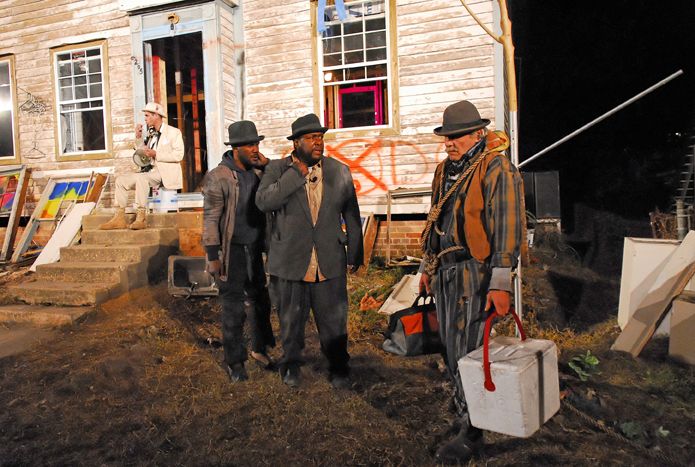Paul Chan is a video and installation artist whose work deftly provokes the audience to reflect on politics and society. In 2007, Paul Chan, Creative Time and the Classical Theatre of Harlem staged Waiting for Godot in a street intersection and in front of an abandoned house in New Orleans to critical and public acclaim. Having published a book about the project, Chan recently spoke to an audience in New York City’s Abrons Art Center. The discussion was moderated by Tim Griffin, editor-at-large of Artforum and included Robert Green, a resident from the Lower Ninth Ward, who was instrumental in the production of the play.
In describing his first impressions of New Orleans, Chan says, “What struck me was basically the sense of people waiting for anything and everything … And I thought this palpable sense of waiting needed a form, and stupidly, obviously, the form was the most emblematic play of waiting we have.”
Places and neighborhoods where it was supposed to be urban, didn’t look urban anymore. It [sic] looked rural. And so it felt like a country road. It looked like every backdrop of Godot I’d ever seen.
But if staging Waiting for Godot in New Orleans made immediate sense, it demanded a sensitivity to the psychological and cultural situation of post-Katrina New Orleans. “We couldn’t just do a play,” Chan said. “If we just did a play, we would be no different than Dick Cheney, right, because every politician from Katrina to now uses any zone of conflict as a backdrop for importing a sense of social engagement.” And coming back to the idea:
I think a Cheneyism would be to imagine that the art is a carrot, but everyone knows a carrot is a stick, you know what I mean? That for a city that needed electricity, security, safe streets, education, and basic civilian needs, I think the last thing people were thinking they needed was art. To imagine that what we do could as a performance, as art, could provide an alternative to the actual basic nourishments for the city I think overplays the idea of what art can be.
So Chan nourished in other ways. He taught a contemporary art history class at the University of New Orleans which on his request was not just cross-registered at other colleges and universities, but open to the public. He and his partners raised $50,000 to contribute to artists and community groups working to rebuild New Orleans after the project was finished.
More importantly, Chan learned to embed and grow his process out of New Orleans social culture.
In New Orleans you had to hang out, you had to learn to hang out, not so to do stuff and get things done, but just spend time to hang out, and be with people with no particular purpose in mind. That’s how you build trust….In a city where no one calls the cops when there’s trouble, where there is no infrastructure to speak of, it’s your neighbors and friends who become the infrastructure by which you survive…That provided the model, the basis for how we tried to organize this [performance]
The book that Paul Chan and his partners wrote about their experience is called Waiting for Godot in New Orleans: A Field Guide
















